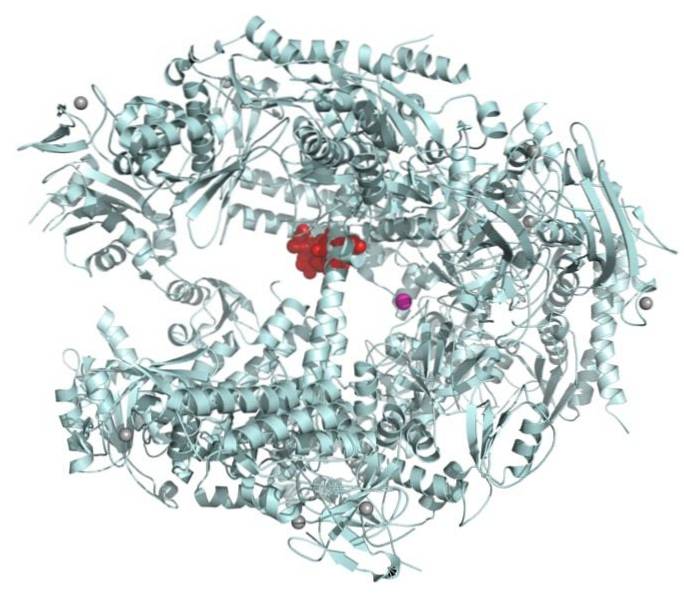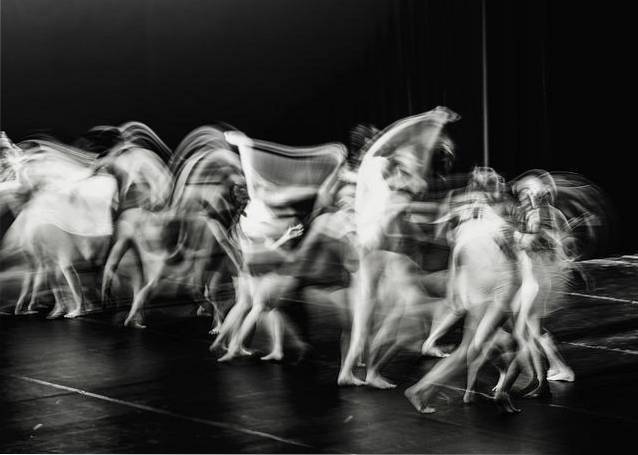
TATA box features and functions
The TATA box, In cell biology, it is a consensus DNA sequence that is found in all lineages of living organisms and is widely conserved. The sequence is 5'-TATAAA-3 'and may be followed by some repeated adenines.
The location of the box is upstream (or upstream, as it is often called in the literature) from the start of the transcription. This is located in the promoter region of genes, where the union with transcription factors will occur. In addition to these factors, RNA polymerase II tends to bind to the TATA box..

Although the TATA box is the main promoter sequence, there are genes that lack it.
Article index
- 1 Features
- 1.1 Location of the TATA box in prokaryotes
- 1.2 Location of the TATA box in eukaryotes
- 2 Functions
- 2.1 Role in transcription
- 2.2 How does transcription happen?
- 2.3 Transcription factors
- 3 Transcription factors and cancer
- 4 References
Characteristics
The beginning of RNA synthesis requires RNA polymerase to bind to specific sequences in DNA, called promoters. The TATA box is the consensus sequence of a promoter. It is called the Pribnow box in prokaryotes, and the Goldberg-Hogness box in eukaryotes..
Thus, the TATA box is a conserved region in DNA. Sequencing of numerous DNA transcriptional start regions demonstrated that the consensus sequence, or common sequence, is (5ʾ) T * A * TAAT * (3ʾ). Positions marked with an asterisk have high homology. The last residue T is always found in promoters of E. coli.
Location of the TATA box in prokaryotes
By convention, base pairs that correspond to the beginning of the synthesis of an RNA molecule are given positive numbers, and base pairs that precede the start of RNA are given negative numbers. TATA box is in region -10.
On E. coli, the promoter region is between positions -70 and +30. In this region there is a second consensus sequence (5ʾ) T * TG * ACA (3ʾ) at position -35. Likewise, positions marked with an asterisk have high homology..
Location of the TATA box in eukaryotes
In eukaryotes, the promoter regions have signal elements that differ for each of the RNA polymerases. On E. coli a single RNA polymerase identifies signal elements in the promoter region.
Additionally, in eukaryotes the promoter regions are more widespread. There are different sequences, located in the -30 and -100 region, that establish different combinations in the different promoters.
In eukaryotes, there are numerous transcription factors that interact with promoters. For example, the TFIID factor binds to the TATA sequence. On the other hand, ribosomal RNA genes are structured in the form of multiple genes, one followed by another..
Variations in the consensus sequences of the -10 and -35 regions alter the binding of RNA polymerase to the promoter region. Thus, a single base pair mutation causes a decrease in the rate of binding of RNA polymerase to the promoter region..
Features
Role in transcription
The TATA box participates in the binding and initiation of transcription. On E. coli, the RNA polymerase holoenzyme is made up of five α subunitstwoββσ. The σ subunit binds to the double-stranded DNA and moves looking for the TATA box, which is the signal that indicates the beginning of the gene.
How does transcription happen?
The σ subunit of RNA polymerase has a very high promoter association constant (in the order 10eleven), which indicates a high recognition specificity between it and the Pribnow box sequence.
RNA polymerase binds to the promoter and forms a closed complex. It then forms an open complex characterized by the local opening of 10 base pairs of the DNA double helix. This opening is facilitated because the sequence of the Pribnow box is rich in A-T.
When the DNA is unwound, the first phosphodiester bond forms and elongation of the RNA begins. The σ subunit is released and the RNA polymerase leaves the promoter. Other RNA polymerase molecules can bind to the promoter and begin transcription. In this way, a gene can be transcribed many times..
In yeast, RNA polymerase II consists of 12 subunits. This enzyme initiates transcription by recognizing two types of consensus sequences at the 5ʾ end of the beginning of transcription, namely: TATA consensus sequence; CAAT consensus sequence.
Transcription factors
RNA polymerase II requires proteins, called TFII transcription factors, in order to form an active transcription complex. These factors are fairly conserved in all eukaryotes..
Transcription factors are molecules of a protein nature that can bind to the DNA molecule and have the ability to increase, decrease or cancel the production of a specific gene. This event is crucial for gene regulation.
The formation of the transcription complex begins with the binding of the TBP protein ("TATA-binding protein") to the TATA box. In turn, this protein binds TFIIB, which also binds to DNA. The TBP-TFIIB complex binds to another complex consisting of TFIIF and RNA polymerase II. In this way, TFIIF helps RNA polymerase II to bind to the promoter..
In the end, TFIIE and TFIIH come together and create a closed complex. TFIIH is a helicase and promotes DNA double strand separation, a process that requires ATP. This happens near the RNA synthesis start site. In this way, the open complex is formed.
Transcription factors and cancer
The p53 protein is a transcription factor, also known as the p53 tumor suppressor protein. It is the product of a dominant oncogene. Li-Fraumeni syndrome is caused by a copy of this mutated gene, which causes the development of carcinomas, leukemia and tumors.
P53 is known to inhibit the transcription of some genes and activate that of others. For example, p53 prevents the transcription of genes with a TATA promoter by forming a complex made up of p53, other transcription factors, and the TATA promoter. Thus, p53 keeps cell growth under control.
References
- Bohinski, R. 1991. Biochemistry. Addison-Wesley Iberoamericana, Wilmington, Delaware.
- Lodish, H., Berk, A., Zipurski, S.L., Matsudaria, P., Baltimore, D., Darnell, J. 2003. Cell and Molecular Biology. Editorial Médica Panamericana, Buenos Aires.
- Friend, S. 1994. P53: a glimpse at the puppet behind the shadow play. Science, 265: 334.
- Devlin, T.M. 2000. Biochemistry. Editorial Reverté, Barcelona.
- Voet, D., Voet, J. 2004. Biochemistry. Jonh Wiley and Sons, New York.
- Nelson, D. L., Cox, M. M. 2008. Lehninger-Principles of biochemistry. W.H. Freeman, New York.



Yet No Comments